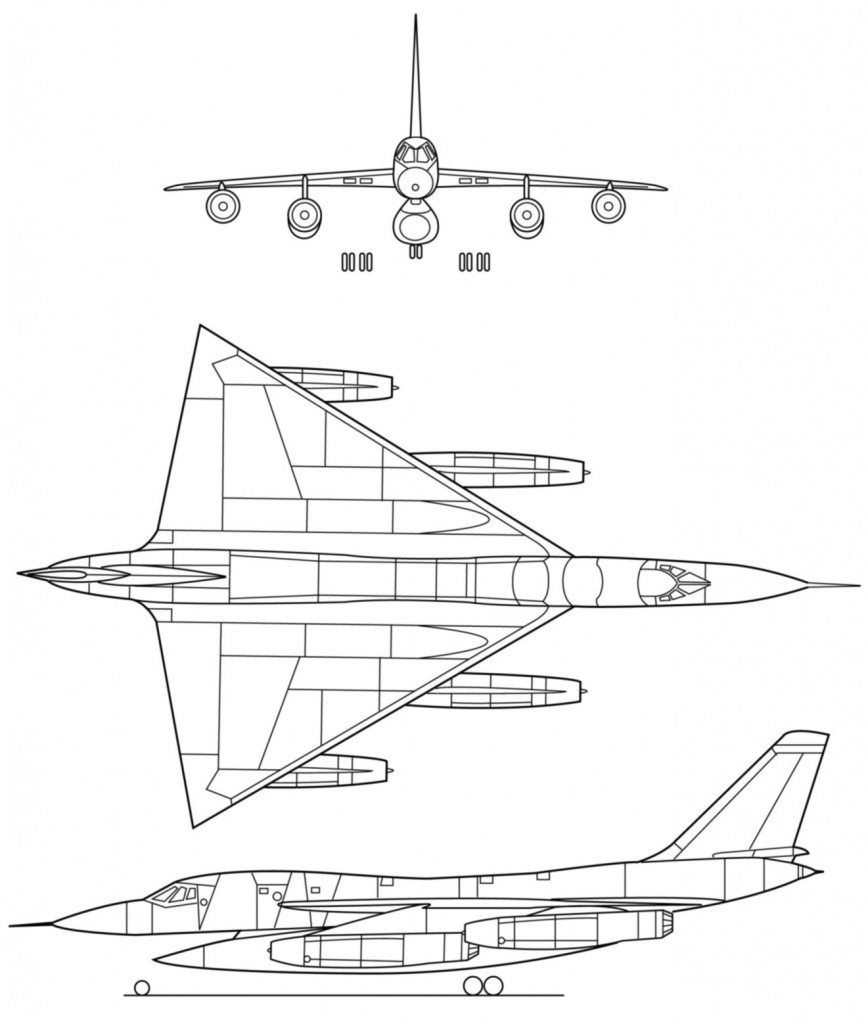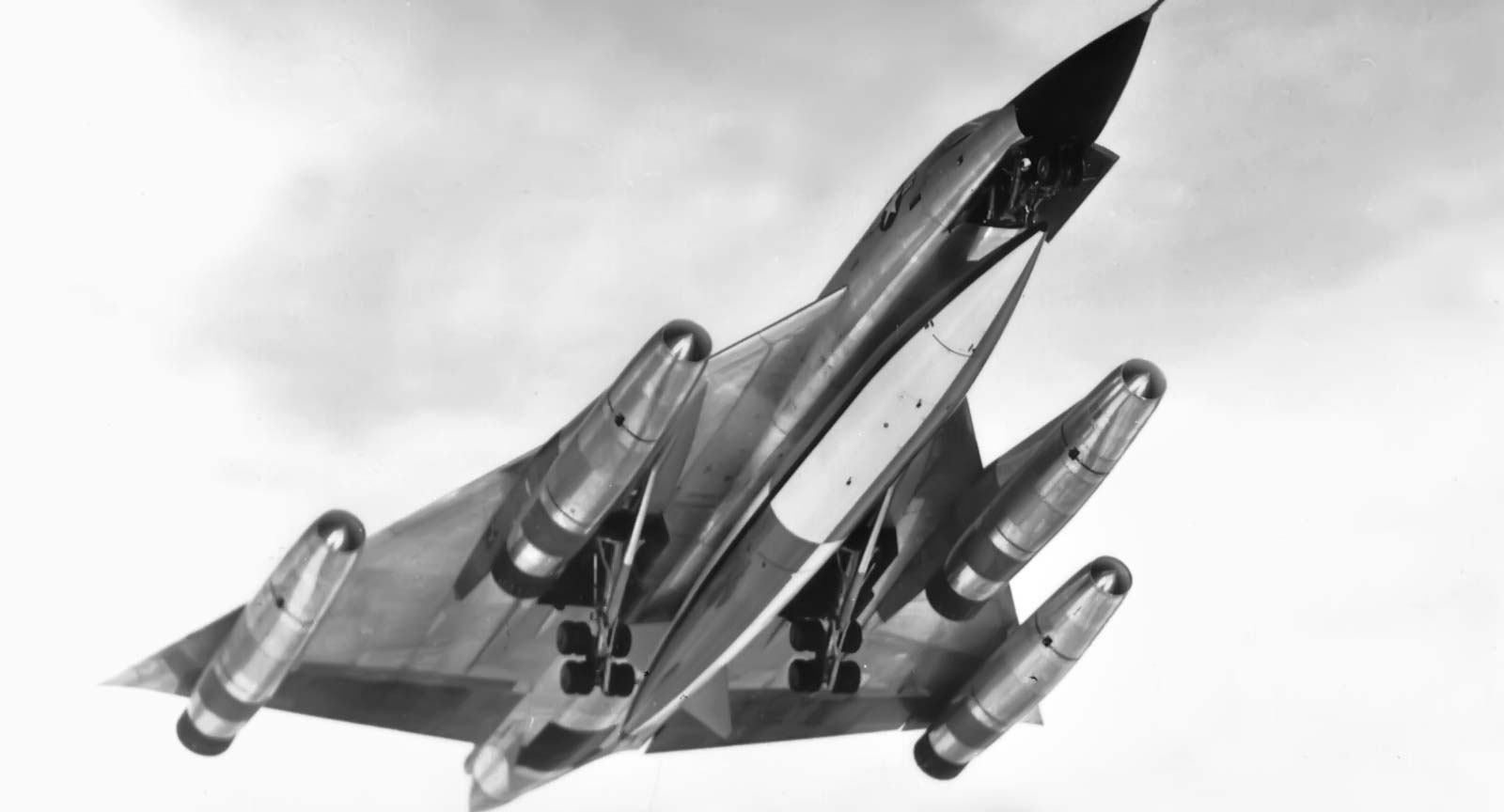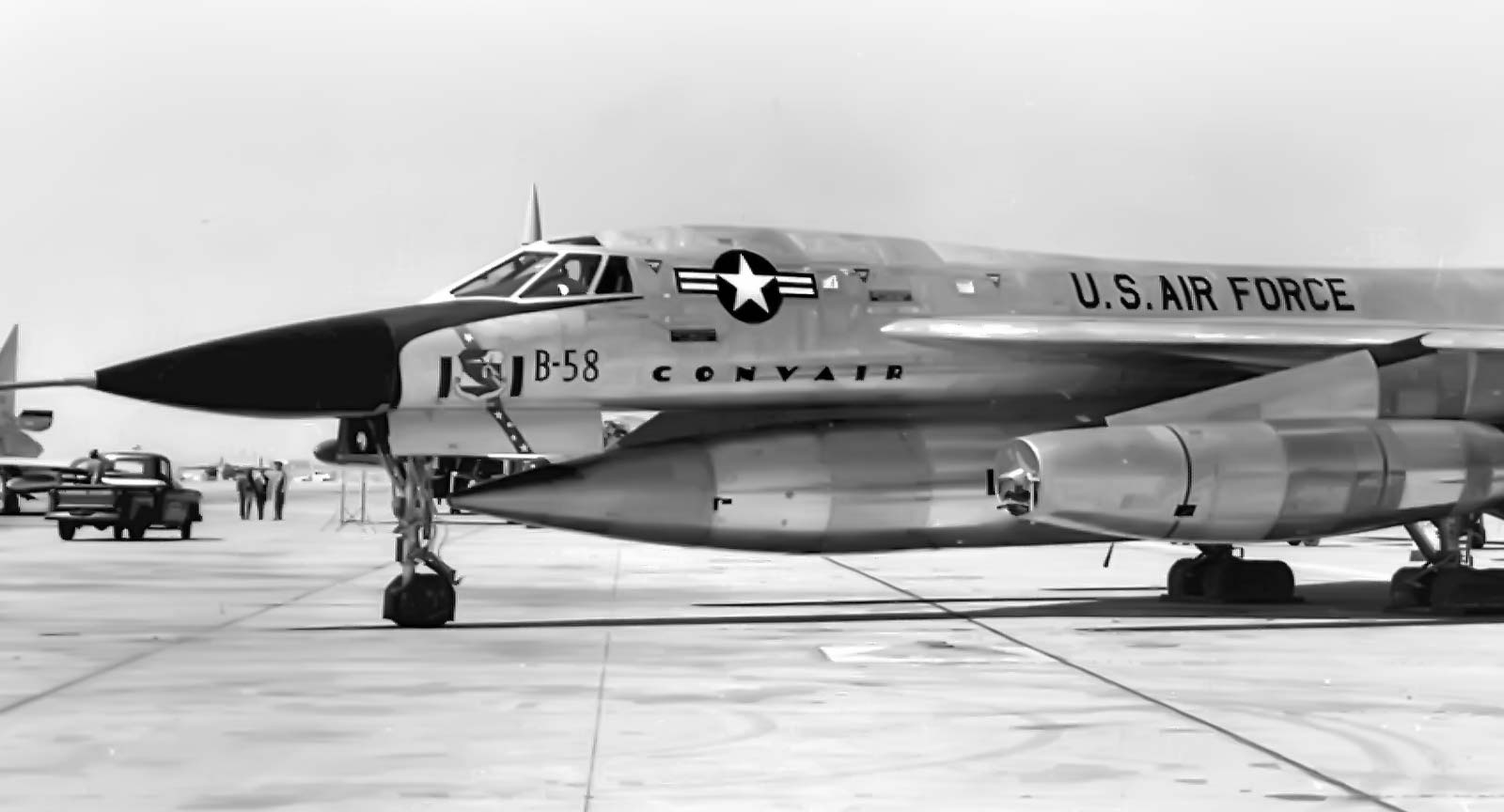Price: $19.95
- 4 magazines, 4 manuals, & photos
- PDF contains 1,671 pages
- Content is keyword searchable
- Print a personal copy
- Pay via PayPal or Credit Card
- International orders welcome!
- Download files upon payment
July 1976
- History of a Hustler, What Ever Happened to the B-58 and Why?
- Across the Pacific, Flying non-stop Tokyo to New York in 1942
- The Best of the Breed, Handicapping German & Allied Fighters
- Cry Havoc, the A-20 goes to War, Part II
April 1993
- Supersonic Spearhead, Convair’s B-58 Hustler
- Clipped Wings, the future of American Aerospace
- Flying Terminated Inventory, the B-32 bomber
November 2000
- Convair’s B-58 Hustler, a Technological Triumph 20 Years Ahead of its Time
- A visit to a Focke-Wulf 190 Production Plant
December 2006
- Factory Fresh, the Convair B-58 Hustler
- Record Breakers: Higher, Faster, Farther
- Combat Lancer: Early F-111 Operations in Vietnam
Manuals & Photos
- B-58A Flight Manual 1965
- RB/B-58A Flight Manual 1959
- B-58A Flight Manual Supplement 1966
- B-58 Ejection Seat Brochure
- Over 200 B-58 Hustler photos
Convair B-58 Hustler
B-58A Specifications
Variants
On Display
Cutaway
Videos
General Characteristics

- Crew: 3: pilot; observer (navigator, radar operator, bombardier); defense system operator (DSO; electronic countermeasures operator and pilot assistant).
- Length: 96 ft 10 in (29.5 m)
- Wingspan: 56 ft 9 in (17.3 m)
- Height: 29 ft 11 in (8.9 m)
- Wing area: 1,542 ft² (143.3 m²)
- Airfoil: NACA 0003.46-64.069 root, NACA 0004.08-63 tip
- Empty weight: 55,560 lb (25,200 kg)
- Loaded weight: 67,871 lb (30,786 kg)
- Max. takeoff weight: 176,890 lb (80,240 kg)
- Powerplant: 4 × General Electric J79-GE-5A turbojet
- Zero-lift drag coefficient: 0.0068
- Drag area: 10.49 ft² (0.97 m²)
- Aspect ratio: 2.09
Performance
- Maximum speed: Mach 2.0 (1,319mph) at 40,000 ft (12,000 m)
- Cruise speed: 610 mph (530 kn, 985 km/h)
- Combat radius: 1,740 mi (1,510 nmi, 3,220 km)
- Ferry range: 4,100 nmi (4,700 mi, 7,600 km)
- Service ceiling: 63,400 ft (19,300 m)
- Rate of climb: 17,400 ft/min (88 m/s) at gross weight
- Wing loading: 44.0 lb/ft² (215 kg/m²)
- Thrust/weight: 0.919 lbf/lb
- Lift-to-drag ratio: 11.3 (without weapons/fuel pod)
Armament
- Guns: 1× 20 mm (0.79 in) T171 cannon
- Bombs: 4× B43 or B61 nuclear bombs; maximum weapons load was 19,450 lb (8,820 kg)
Avionics
- AN/APB-2 Bombing radar
- AN/APN-110 Doppler navigational radar (part of Sperry AN/ASQ-42 Navigation & Bombing System)
- AN/APN-170 Terrain-following radar
- AN/APR-12 Radar warning receiver
- Hughes Aircraft AN/APQ-69 podded side-looking aperture radar (mounted on RB-58A)
- Goodyear AN/APS-73 podded synthetic aperture radar (mounted on RB-58A)
- XB-58: Prototype; two built.
- YB-58A: Pre-production aircraft, 11 built.
- B-58A: Three-seat medium-range strategic bomber aircraft, 86 built.
- TB-58A: Training aircraft, eight conversions from YB-58A.
- NB-58A: This designation was given to a YB-58A, which was used for testing the J93 engine. The engine was originally intended for the North American XB-70 Valkyrie Mach 3 bomber.
- RB-58A: Variant with ventral reconnaissance pod, 17 built.
- B-58B: Unbuilt version. SAC planned to order 185 of these improved bombers which had uprated J79-GE-9 engines, a stretched fuselage for extra fuel capacity, canards and could carry conventional weapons. A prototype B-58B was ordered (S/N 60-1109), but the entire project was canceled before construction began, due to budgetary considerations. The B variant was also planned to be the “mothership” for a Mach 4 parasite called the FISH (for First Invisible Super Hustler). Because It was to be faster and larger than the B-58A, it could carry the FISH instead of the external pod. At an altitude of at least 35,000 feet (11,000 metres) at speeds in excess of Mach 2 the FISHs three ramjet engines could be started. The Super Hustler would then disengage from the B-58B and climb up to 90,000 feet (27,000 metres) and accelerate to Mach 4.2 to complete its mission.
- B-58C: Unbuilt version. Enlarged version with more fuel and 32,500 lbf (145 kN) J58, the same engine used on the Lockheed SR-71. Design studies were conducted with two and four engine designs, the C model had an estimated top speed approaching Mach 3, a supersonic cruise capability of approximately Mach 2, and a service ceiling of about 70,000 ft (21,300 m) along with the capability of carrying conventional bombs. Convair estimated maximum range at 5,200 nautical miles (6,000 mi; 9,600 km). The B-58C was proposed as a lower cost alternative to the North American XB-70. As enemy defenses against high-speed, high-altitude penetration bombers improved, the value of the B-58C diminished and the program was canceled in early 1961.
Today there are eight B-58 survivors:
- TB-58A
- 55-0663 – Grissom Air Museum, Grissom Air Reserve Base (former Bunker Hill AFB / former Grissom AFB), Peru, Indiana. This is the oldest remaining aircraft and the fourth B-58 built.
- 55-0668 – Little Rock Air Force Base in Jacksonville, Arkansas.
- B-58A
- 55-0665 Snoopy – Edwards Air Force Base, California, Built as a YB-58A, later redesignated B-58A. This aircraft sits derelict as a photo target on Edwards AFB’s photo range.
- 55-0666 – Built as a YB-58A, later redesignated B-58A. Under restoration at Castle Air Museum at the former Castle Air Force Base in Atwater, California. Formerly on display at Octave Chanute Aerospace Museum, Rantoul, Illinois.
- 59-2437 Firefly II – Lackland AFB/Kelly Field Annex (former Kelly Air Force Base), San Antonio, Texas.
- 59-2458 Cowtown Hustler – National Museum of the United States Air Force, Wright-Patterson Air Force Base, Dayton, Ohio. This aircraft flew from Los Angeles to New York City and back on 5 March 1962, setting three separate speed records, and earning the crew the Bendix Trophy and the Mackay Trophy for 1962. The aircraft was flown to the Museum on 1 March 1969. The aircraft is on display in the Museum’s Cold War gallery.
- 61-2059 Greased Lightning – Strategic Air Command & Aerospace Museum near Ashland, Nebraska. It averaged 938 nmph flying 8,028 nmi. from Tokyo to London in 8 hours and 35 minutes in October 1963.
- 61-2080 – Pima Air & Space Museum, adjacent to Davis-Monthan Air Force Base, in Tucson, Arizona. It was the last B-58 to be delivered.








